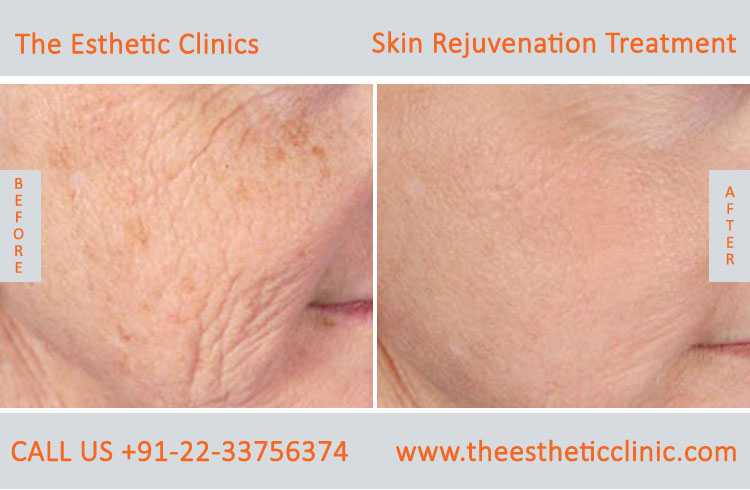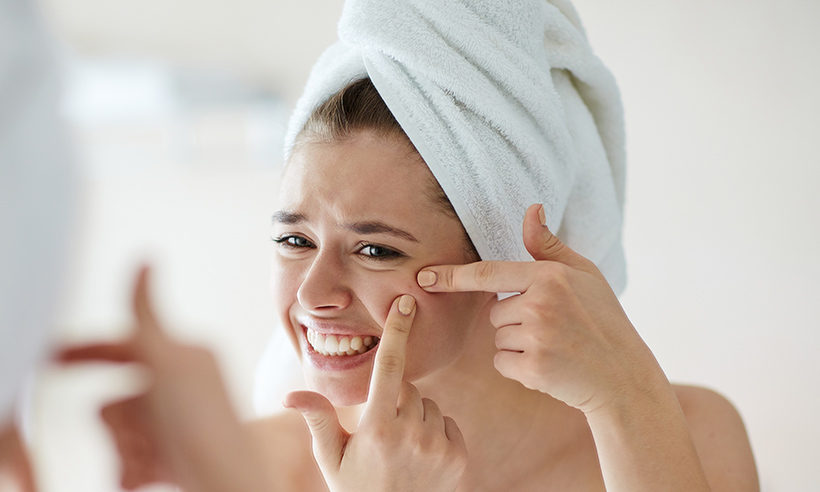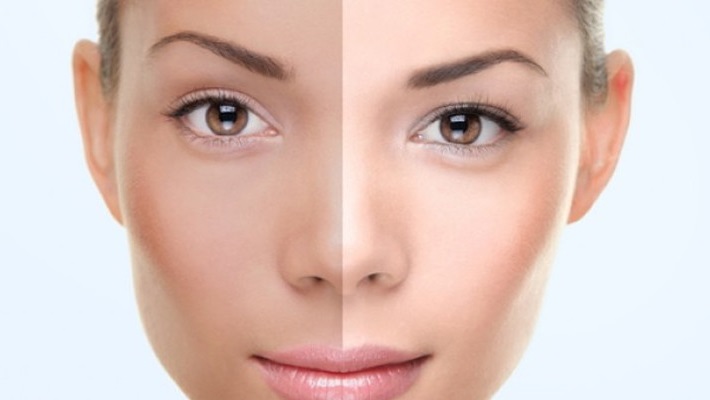When it comes to skincare, we all desire a healthy, glowing complexion that makes us feel confident and beautiful. Skin rejuvenation, brightening, and whitening are all techniques that can help achieve this goal.
These processes involve reducing the signs of aging and improving skin tone and texture. They can be performed in a skin rejuvenation clinic like The Esthetic Clinics in India, by a qualified dermatologist like Dr. Rinky Kapoor.
Understanding Skin Pigmentation
Melanin is a pigment on the skin that is responsible for the color of the skin, hair, and eyes. It is produced by cells called melanocytes, which are found in the basal layer of the epidermis, and helps protect the skin from the harmful effects of UV radiation.
Some factors that affect the color of the skin include genetics, sun exposure, medications, and skin injuries such as acne and cuts. Hormonal changes such as those experienced during pregnancy and menopause can also cause skin color changes. It may lead to an increase in melanin production and the appearance of dark spots and/ or patches on the skin.
Another factor that is common in changing the color of the skin is medication and supplements. Some medications like birth control pills and chemotherapy drugs have been reported to contribute to hyperpigmentation.
What is Skin Rejuvenation
Factors such as aging, injuries, accidents, burns, and using inappropriate skin products can cause the skin to look dry, dull, unevenly toned, older, and rough. Luckily, dermatologists and cosmetologists like Dr. Rinky Kapoor can help with these symptoms through skin rejuvenation.
This is the process of restoring the youthful appearance of the skin by reducing the signs of aging such as wrinkles, fine lines, and sagging skin, improving the skin texture, and enhancing the skin tone
Skin rejuvenation clinics like The Esthetic Clinics offer multiple treatments that aim to address different skin concerns and stimulate the production of new collagen and elastin fibers to create more youthful, radiant skin.
It is a holistic approach to skincare that involves using various techniques to improve the overall appearance and health of the skin. The specific treatment plan recommended to a patient depends on their individual skin concerns and goals.
Skin Rejuvenation Techniques
The Esthetic Clinics offer multiple skin rejuvenation techniques to address different skin concerns and help patients achieve their desired skin texture and tone. These techniques can broadly be classified into two categories:
- Non-Invasive Skin Rejuvenation Techniques
As the name suggests, non-invasive skin rejuvenation treatments are the type of procedure that does not require incisions and injections. They are easier and relatively faster to administer, gentler to the skin, and need little to no downtime. Some of them include;
Topical Products: Topical products involve the application of creams and ointments that contain retinoids, antioxidants, and growth factors on the skin to improve texture, and tone, and reduce fine lines and wrinkles. These products work by increasing cell turnover, stimulating collagen production, and protecting the skin from environmental damage.
Chemical Peels: Chemical peels involve the application of a chemical solution to the skin, to exfoliate and remove the outer layer of dead skin cells. By removing this layer, the inner skin that remains has an improved texture, reduced fine lines and wrinkles, and reduced appearance of acne scars.
Laser Therapy: Laser therapy uses light energy to improve skin texture, reduce fine lines and wrinkles, and address other skin discoloration issues. During the treatments, a laser beam is concentrated and penetrated into specific areas of the skin to stimulate collagen production.
Microneedling: During a micro needling procedure, the practitioner uses a small device with tiny needles to create micro-injuries in the skin. This stimulates the production of collagen and elastin fibers, which help maintain a more youthful-looking skin.
- Invasive Skin Rejuvenation Techniques
Invasive skin rejuvenation techniques are procedures that may require incisions or injections. They include;
Dermal Fillers: During this treatment, the practitioner injects substances into the skin to help restore volume to the face, reduce the appearance of wrinkles, and enhance the contours of the face. There are different types of fillers used but one of the most common is made of hyaluronic acid, a substance that naturally occurs in the body.
Botox: Like dermal fillers, Botox is also an injectable substance that is injected into the skin to help relax the facial muscles that cause wrinkles and fine lines. It is mostly used on the forehead, around the eyes, and between the eyebrows.
Thread Lift: A thread lift is another minimally invasive procedure that uses dissolvable threads to lift and tighten sagging skin. It is usually used in the mid-face, jawline, and neck.
Laser Resurfacing: Laser resurfacing is a more invasive laser treatment compared to the above-mentioned methods. During the procedure, the outermost layers of the skin are removed using a laser, which stimulates the production of collagen and promotes the skin’s natural healing process.
This can help improve the skin texture, reduce fine lines, wrinkles, age spots, and other aging symptoms, and address other skin discoloration issues.
Patients can discuss with an experienced practitioner like Dr. Rinky Kapoor about their skin concerns and goal, and choose the most suitable skin rejuvenation technique.
Potential Risks and Side Effects of Skin Rejuvenation Techniques
Skin rejuvenation techniques can effectively improve the appearance of the skin. However, there are some potential risks and side effects that come with each treatment. Patients are urged to work with a skin rejuvenation clinic that can make them aware of all the potential risks and advise them of the most suitable treatment for their specific skin concerns.
Some of the risks and side effects patients may experience include;
Topical Products: If used too frequently and/ or in high concentrations, topical products may cause skin irritation, redness, and peeling. To prevent this, the treatments can be administered in lower concentrations at the beginning of the treatment and gradually increased as the skin tolerates it.
Chemical Peels: Chemical peels can cause symptoms such as redness, swelling, and skin sensitivity. In rare cases, if the procedure is not well-performed by a qualified practitioner, it may cause scarring and infections. It is therefore important to work with an experienced dermatologist or cosmetologist in India, and follow the post-treatment instructions carefully, to minimize the risk of these side effects and complications.
Laser Therapy: Laser therapy is another effective skin rejuvenation procedure that offers excellent results. However, patients may experience side effects such as skin irritation, redness, sensitivity, and in rare cases, hyperpigmentation, and scarring.
Microneedling: Microneedling can cause skin irritation, redness, and sensitivity. If the treatment is not done well, it may cause adverse side effects such as infection and scarring. To minimize these risks, patients should only work with a qualified practitioner and religiously follow post-treatment instructions.
Dermal Fillers: While dermal fillers can help restore volume and fullness to the face and reduce signs of aging like wrinkles and fine lines, they can also cause redness, swelling, and bruising at the injection site. In severe cases, side effects may include infection and allergic reactions.
Botox: Some side effects of Botox include redness, swelling, and bruising at the injection site.
Thread Lift: Thread lifts requires to be performed by an experienced dermatologist or cosmetologist like Dr. Rinky Kapoor, who has the necessary skills and training to achieve the desired results. If not performed by a professional, patients are likely to experience side effects like redness, swelling, bruising, infections, and thread migration.
Laser Resurfacing: Laser resurfacing can cause adverse side effects such as hyperpigmentation and scarring if not performed well. Other symptoms of the treatment include skin irritation, redness, and sensitivity.
To make an informed decision, patients should discuss the side effects and benefits of each of the available treatments to ensure minimal side effects and risks.
Skin Brightening Techniques
The Esthetic Clinics also offers multiple skin brightening techniques including;
Topical Treatments: Topical treatments can be used to reduce the appearance of dark spots, uneven skin tone, and hyperpigmentation. These products contain active ingredients such as hydroquinone, kojic acid, arbutin, and Vitamin C, and work by inhibiting the production of melanin. Topical treatments are widely available in the market, and patients can get them in different forms including serums, creams, and lotions. Even so, it is important that patients get their prescription from a skin care professional, a dermatologist, or a cosmetologist like Dr. Rinky Kapoor, to ensure the treatments are safe and effective.
Vitamin C Serums: Vitamin C is a powerful skin brightening treatment that contains a high concentration of vitamin C. It is a popular antioxidant that can help to brighten the skin and reduce the appearance of dark spots and hyperpigmentation, by inhibiting the production of melanin and promoting collagen production. Typically, patients use it by simply applying it directly to the skin.
Chemical Exfoliants: Treatments such as alpha-hydroxy acids (AHAs), beta-hydroxy acids (BHAs), and salicylic acid are common chemical exfoliants that are used for skin brightening. These acids work by exfoliating the top layer of the skin, to reduce the appearance of dark spots and hyperpigmentation. Chemical exfoliants products are available in different forms including toners, serums, and peels.
Natural Remedies: Natural ingredients such as lemon juice, turmeric, aloe vera, papaya, and honey contain natural enzymes, antioxidants, and anti-inflammatory properties that can help to reduce the appearance of dark spots and hyperpigmentation. They may not be as effective as other skin-brightening treatments but they can be a gentle and affordable option for those with sensitive skin or those who prefer a more natural approach.
Potential Risks and Side Effects of Skin Brightening Techniques
As seen above, all the discussed skin-brightening methods are effective. However, they each come with their own set of potential risks and side effects. Working with a reputable skin brightening clinic is also important to ensure optimal results and minimal complications, especially for patients with sensitive skin or a history of skin allergies.
- Topical Treatments
Topical treatments come with a bunch of side effects, some mild, some severe. They include;
Skin irritation: Topical treatments such as hydroquinone, can cause skin irritation, redness, and itching, especially for patients with sensitive skin.
Sun sensitivity: Some topical treatments can increase the skin’s sensitivity to the sun, which in turn can increase the risk of sunburn and sun damage.
Uneven skin tone: In some cases, some topical treatments can cause uneven skin tone, especially if not applied correctly.
- Vitamin C Serums
Skin irritation: Vitamin C serums can cause skin irritation, redness, and itching, especially for patients who have sensitive skin or if the serum contains a high concentration of Vitamin C.
Instability: Vitamin C is an unstable ingredient that can oxidize quickly. If this happens, it can reduce its effectiveness and cause skin irritation.
- Chemical Exfoliants
Skin irritation: Patients who have sensitive skin can experience redness, irritation, and itching. This may also happen if a patient uses a product with a high concentration of acid.
Sun sensitivity: Chemical exfoliants can increase skin’s sensitivity to the sun, which in turn can increase the risk of sunburn and sun damage.
Over-exfoliation: Overuse of chemical exfoliants can lead to over-exfoliation, which can cause dryness, peeling, and flakiness.
- Natural Remedies:
Skin irritation: As much as they are considered natural, some remedies such as lemon juice, turmeric, and papaya can cause skin irritation, redness, and itching, especially for people with sensitive skin or if a patient uses too much of the ingredient.
Allergic reactions: Before patients use any remedies, even if they are natural, they should first find out if they have allergies to the ingredient.
Ineffectiveness: Natural remedies are not as effective as other skin brightening treatments prescribed by a professional. Those that are effective may take longer to see results.
Everyone’s skin is different thus everyone will have a different reaction to different treatments. Patients with sensitive skin or those with some allergies should be extra careful when picking their preferred treatment method.
Working with a professional like Dr. Rinky Kapoor can help ensure there aren’t any serious complications and symptoms and that patients choose treatments that will give them the best results.
Skin Whitening Techniques
Some skin whitening techniques patients would find at The Esthetic Clinics include;
Hydroquinone: Hydroquinone is a skin-lightening agent commonly used to treat hyperpigmentation and age spots. It works by inhibiting the production of melanin in the skin to whiten the skin color.
Kojic Acid: Kojic is a naturally occurring acid that is derived from fungi. It also works by inhibiting the production of melanin in the skin.
Glutathione: Glutathione is an antioxidant that is naturally produced by the body. Patients can also get it in supplement form and is sometimes used as a skin-whitening treatment.
Laser Treatments: Laser treatments are popular treatments used for different skin conditions. Amongst its many benefits, it can be used to reduce the appearance of hyperpigmentation and lighten the skin. How it works is that the laser energy is concentrated on the skin, to target and break down melanin in the skin.
Topical Steroids: Topical steroids can be used to treat multiple skin conditions, as well as reduce inflammation and lighten the skin.
While the decision to use skin whitening treatments depends on an individual’s preferences, needs, and skin concerns, it should also be influenced by a skilled and experienced skin specialist like Dr. Rinky Kapoor, a cosmetologist at The Esthetic Clinics, who can ensure the patient make a good choice with minimal side effects.
Potential Risks and Side Effects of Skin Whitening Techniques
During the initial consultation at the skin whitening clinic, patients should be made aware that all skin whitening treatments come with some side effects and may also carry a risk of complications.
Some of these risks and side effects are;
Hydroquinone: While hydroquinone has proven to be effective in many cases, its use is controversial due to its potential side effects. Some patients have reported experiencing symptoms such as skin irritation, redness, and itching. Long-term use of hydroquinone can also cause a condition called exogenous ochronosis, which results in darkening and thickening of the skin.
Kojic Acid: People with sensitive skin can experience symptoms such as skin irritation when treated with Kojic acid. Long-term use of the acid can also lead to a condition called contact dermatitis, which causes inflammation and itching of the skin.
Glutathione: There is limited scientific evidence to support the use of glutathione for skin whitening. Its safety and effectiveness have also not been thoroughly studied. Some people have reported experiencing symptoms such as stomach upset and allergic reactions.
Laser Treatments: Laser treatments have many benefits but they may also have many risks and complications if not performed with precaution. They can cause side effects such as skin irritation, redness, and scarring. Some patients have even reported changes in skin pigmentation, including darkening or lightening of the skin.
Laser treatments can be expensive and may require multiple sessions to achieve the desired results, which may not be favorable and convenient to some people.
Topical Steroids: Long-term use of topical steroids can cause a condition called steroid-induced rosacea, which causes symptoms such as redness, itching, and burning of the skin.
Skin Rejuvenation Treatment Before & After Photos –

.jpg)









